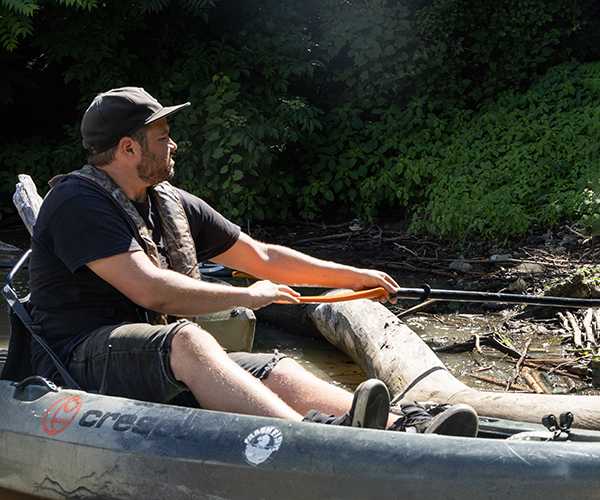Buried within the foggy Cuyahoga Valley hills, the Edward Cranz Farm has sat unaltered since 1867. Its 10 acres entertain a mid-19th century chicken coop, smokehouse and toolshed. When the farm changed hands for the first time in the 1970s, its new owner built a pole barn. It was the most action the property had seen in more than a century.
But this summer, new renovations are coming to the tranquil stead. The restored and revamped Cranz Farm Inn and Event Center will be able to accommodate overnight guests starting in 2024.
“There are very few places to stay in the Cuyahoga Valley National Park,” says Falcone-Hall.
Since five trailheads connect to the property, overnight options would be a welcome checkpoint for hikers. In addition, the farm’s neighbor, Hale Farm & Village, sees a variety of events that would be boosted by a night spent in the valley, like weddings.
As of February, an additional $100,000 has been gifted to WRHS by private donors, though Falcone-Hall estimates the total cost of renovation may dance past the $1 million mark. After receiving proposals in January, WRHS hired Meld Architects. Meld recently helped restore the Cleveland Museum of Art's historic Holden Terrace.
“The biggest challenge architecturally is that it’s a home, and it was a residence for a single family. We’re envisioning carving the interior up so five or six different families could stay there,” Falcone-Hall says, citing private restroom facilities and a kitchen area.
Courtesy Western Reserve Historical Society
WRHS acquired the farm in a land swap with the national park in 2000. Its most recent tenants had been Siegfried and Heidi Buerling. Siegfried worked as Hale Farm & Village’s former director. He also founded the Cuyahoga Valley Scenic Railroad, which celebrated its 50th anniversary last April. He passed away in December 2021.
“He was a wonderful steward and custodian,” Falcone-Hall says. “I would like to think that he would be very pleased that not only are we going to restore the house and the outbuildings, but we’ll be using them in a way that is a benefit to the community.”
Like Edward Cranz, the original owner of Cranz farm, Buerling was a German immigrant. Coincidentally, while the WRHS is trying its hand at hospitality, the tradition is rooted deep in the valley.
In 1925, Charles Oviatt and Pauline Hale opened the Jonathan Hale House to boarders on the Hale farm property, named after Charles Oviatt’s grandfather.
“It’s a critical importance that we preserve and safeguard significant, historic buildings and stories of the people who built them,” Falcone-Hall says. “This isn’t just a restoration project. This is going to be repurposed for the benefit of people in Northeast Ohio, people visiting Northeast Ohio. We hope it’s an enhancement to an experience that people will have when they come to Ohio and they visit the Cuyahoga Valley National Park.”
Get ahead of the weekend by signing up for our free weekly “In the CLE” newsletter — your guide to fun throughout The Land. Arriving in your inbox every Wednesday, this weekend to-do list fills you in on everything from concerts to museum exhibits — and more. Click here to subscribe.




